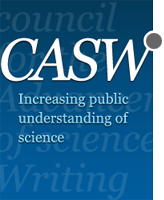Mitchell Waldrop
Position/Organization: editor, Nature
Guide to Nature News features
Summary
Nature’s news features section publishes timely, authoritative, impactful, compelling feature stories reported and written by journalists, about and for the research community. We welcome well thought-out pitches as well as preliminary ideas.
SECTION A: THE BASICS
1. What are Nature news features?
They are long-form journalism covering all areas of science, science policy and the scientific community;
They are written with our ‘core’ audience of working research scientists in mind;
They also aim to be appealing to Nature’s entire readership, spanning all disciplines and professions. Anyone reading them should feel that they get ‘inside’ access to science and scientific research: how it works, its challenges and its controversies;
They aim to be informative, thought-provoking, can’t-put-down reads;
They aim to set the agenda on issues in which science meets society or public policy, such as genetics, synthetic biology or climate change;
They aim to be something that our lab readers will be talking about later over coffee; that institute leaders or policy makers will be quoting in their debates; that bloggers will be discussing online;
They are typically between 2 and 4 pages (1600-3200 words), allowing Nature to explore topics, journalistically, in greater depth than is possible in a news story;
They provide greater detail and analysis — of the scientists, the science, and the scientific process — than many other science news outlets;
They are frequently written with a strong narrative and vivid characters. Think about the last feature story you read in the New Yorker, Harper’s or your preferred news magazine — a story that you read to the end without meaning to.
2. Five questions to ask of a potential news feature
(NB. Not all features have to meet all these criteria, and we aim to include a diversity of styles and approaches).
- Why is it of interest to our core audience of research scientists?
- Does it have a clear narrative or structure to hold it together?
- Does it provide ‘inside’ access to research and the research community?
- Why are we writing it now (what’s the news peg)?
- Is it a story that has not been told before, or that we are telling in a new way?
3. Contact details
We welcome well researched pitches.
Helen Pearson: Chief features editor h.pearson@us.nature.com
Rich Monastersky: Earth and environmental sciences r.monastersky@us.nature.com
Brendan Maher: Biomedical sciences b.maher@us.nature.com
Mitch Waldrop: Physics, chemistry, technology m.waldrop@us.nature.com
Speaking:
-
Saturday, November 6th, 11:15 am - 12:45 pm

